As a business owner, you understand the importance of providing top-notch services to your customers. However, in today’s fast-paced digital world, it can be challenging to keep up with the evolving demands of your customers. They expect quick and seamless transactions, personalized experiences, and secure data handling.
In the financial industry, traditional banking systems can be rigid and slow to adapt to changing customer needs. This can lead to a loss of customers and missed business opportunities. That’s where open banking APIs come in – they provide a solution to these challenges.
With a projected growth rate of 46% by 2026, India is anticipated to have the quickest growth rate for Open Banking APIs. In this post, we’ll learn about the process of using Open Banking APIs in India, assisting you in navigating this fascinating new area of banking technology.
What are Open Banking APIs?
Open banking APIs allow banks and fintech firms to securely share customer data with third-party institutions, enabling them to develop innovative financial solutions that can be customized to meet the unique needs of your business. This creates a win-win situation for both your business and your customers, with your business gaining a competitive edge and your customers receiving tailored services.
Rising of Open Banking APIs
The growth of Open Banking APIs is an important advancement in the financial sector, transforming traditional banking. When talking about the development of Open Banking APIs, here are the three major reasons:
1. Rising Customer Expectations: Since customers are increasingly demanding a more specialized and individualized banking experience it has become crucial to build customized solutions like Open Banking APIs, to meet their needs for quick access to financial information and more effective services. Studies stated 15% of customers prefer online banking and are okay with the exchange of their personal information for a better experience.
2. Competition from Fintech: Fintech businesses are the technologically advanced versions of traditional banking, and they can never exist without the actual bank. With the introduction of Open Banking APIs, fintech businesses are taking on traditional banks by providing cutting-edge goods and services tailored to clients’ demands. This system has opened up new possibilities for banks and fintech to work together to offer clients a better experience.
3. Rising Regulatory Environment: Since every dominance has different banking regulations it is difficult for banks and businesses to impose one regulation everywhere. To ensure the security and privacy of consumer data, Open Banking APIs are subject to strict regulatory regulations. It allows flexibility for businesses to partner with banks adhering to the rules and providing their customer’s seamless experience.
What is API in Open Banking?
APIs are the crucial element for Open Banking, as it is the medium that allows communication between enterprises and banks. They enable third-party developers to access banking information and produce cutting-edge goods and services that meet unique customer requirements. There are 3 types of APIs when considering Open Banking.
1. Private (internal) APIs: These are utilized exclusively for information exchange within the enterprise, i.e. for internal banking systems. For data sharing, internal operations and departments of banks mostly use these APIs.
2. Partner APIs: These are used in collaboration with service providers and financial institutions. They enable banks to securely communicate customer information with their partners, which allows them to produce customized goods and services.
3. Open (public) APIs: Third-party developers can access financial data and create cutting-edge goods and services using open APIs, which are publicly accessible. These APIs must meet strict regulatory requirements to ensure customer data security and protection.
What Led to The Growth of Open Banking in API
Regulatory and market forces have combined to fuel the expansion of Open Banking APIs. Here are the two great reasons behind its growth:
1. Open Banking API Growth is Being Driven by Regulation: As mentioned, every dominance are having its own terms of banking to meet the desired customer experience and benefits. The business finance sector is continuously working on technological advancement, eventually, it has encouraged the usage of Open Banking APIs.
2. Market Forces Driven Open Banking API Growth: New potential for cooperation between banks and outside developers has been made possible by developing new technologies and the growth of fintech businesses. The story of Open Banking has been fueled by banks’ ability to work with these developers to produce cutting-edge goods and services thanks to Open Banking APIs.
What Can Banks Do?
Banks have several options for utilizing Open Banking APIs’ growth potential. By increasing the client experience and offering more individualized services, they can concentrate on enhancing their data security and privacy standards, forming alliances with fintech firms and other financial institutions, and spending money on innovative technology.
What is Banking as a Service (BaaS)?
A new advancement in banking called Banking as a Service (BaaS) enables non-financial businesses to provide banking services to their clients without the requirement of a banking license.
BaaS allows firms to provide financial services using APIs a banking partner offers. These services may include straightforward ones like creating a bank account and more complicated ones like lending and insurance.
BaaS can completely transform the financial sector by allowing businesses to enter the financial services market with minimal upfront expenditure and without navigating complex regulatory requirements.
Due to the new paradigm, traditional banks and fintech companies now have a greater opportunity to collaborate and provide customers with more cutting-edge goods and services.
Open Banking API in India
With several banks and fintech firms using Open Banking APIs, India is leading the global Open Banking trend.
With the introduction of the Payment and Settlement Systems in 2019, the Reserve Bank of India (RBI) significantly contributed to promoting Open Banking in India. This rule requires banks to grant access to their payment systems via APIs to allow third-party developers to establish new payment solutions.
As Open Banking APIs have become popular in India, banks and fintech firms now have greater options to work together and provide clients with cutting-edge goods and services.
Open Banking APIs are anticipated to significantly influence the future of banking in India as the country’s fintech ecosystem develops further.
How an Open Banking API Works
Generally, Open Banking APIs operate in three steps:
1. Authentication: Before gaining access to client data, third-party suppliers must prove their identity. Usually, secure authentication techniques like OAuth are used for this.
2. Authorization: After authentication, the third-party supplier needs the client’s consent to access their data.
3. Data Sharing: With proper approval, the third-party service provider has real-time access to the customer’s data via the bank’s API.
Open API Banking Architecture
Open Banking API architecture frequently includes API gateways, which allow outside suppliers safely access bank data. Regulation-driven and market-driven architecture are the two basic categories.
Regulation-driven APIs are created to adhere to regulatory norms and procedures, such as PSD2 in Europe. They frequently take robust security and compliance measures to safeguard customer data.
Conversely, market-driven APIs are created to satisfy the market’s desire for novel goods and services. They often have stronger security features but are more responsive to the demands of outside providers.
API gateways can be distributed or centralized. Managing all API traffic can be done through centralized gateways, making it simpler to enforce security and compliance rules. On the other hand, distributed gateways provide branch-level management of API traffic, which may be more effective for big businesses.
Benefits of Open Banking
Both banks and customers stand to benefit greatly from open banking. Here are a few of the principal advantages:
1. Evolve with Customer Base: Via Open Banking, banks may better comprehend the needs and preferences of their clients and modify the services and products they offer as a result.
2. Positive customer experience: Open Banking may contribute to a more frictionless and customized customer experience by giving third-party providers access to bank data.
3. Increased innovation: By enabling fintech companies to use bank data to develop new products and services, Open Banking promotes innovation.
4. New revenue sources: Open Banking can provide banks and third-party vendors with new revenue streams by simplifying the process of developing new products and services.
5. Greater scalability: Outside providers and banks can scale their operations more profitably and swiftly by utilizing APIs.
6. Personalization: If banks and other service providers have access to more customer information, they can better adapt their products and services to the demands of their customers.
Open Banking API Challenges
Open Banking has many advantages; however, many problems need to be fixed:
1. Data security and financial privacy: Open Banking requires the sharing of sensitive financial data, yet there is a danger that this data will be compromised or that financial fraud will occur. It is important to establish appropriate security measures to protect customer information and privacy.
2. Customer rights: Customers ought to control their data and be able to choose which third-party service providers they want to have access to. Additionally, there is a need for open and transparent communication concerning data interchange and utilization.
3. Compliance risk: Open Banking APIs are subject to a slew of rules and compliance requirements that can be difficult to understand and follow. Compliance risk must be appropriately managed to achieve regulatory compliance.
4. Cybersecurity risks: As the number of digital transactions has grown, so have cyber dangers. To protect against cyber-attacks, appropriate cybersecurity measures must be established.
Open Banking API Regulation
The Open Banking API is regulated by a bunch of different bodies and rules to make sure it’s secure and consistent. Some of the main rules and regulations are:
1. Payment Service Providers Derivative (PSD2): PSD2 is an EU directive that aims to make the payments industry more competitive and innovative. This makes it mandatory for banks to give third-party vendors access to their customers’ info through open APIs.
2. Open Banking Working Group: The Open BankingWorking Group (OBWG) was established by the United Kingdom government to examine the advantages and disadvantages of Open Banking. It proposed the development of an Open Banking API standard.
3. Open Bank Project: The Open Bank Project is an open-source platform enabling banks to improve their digital products via APIs quickly.
4. Banking Industry Architecture Network: The Banking Industry Architecture Network (BIAN) is a non-profit organization that aims to provide a common framework for the banking industry.
5. Open Banking API Guidelines: To standardize the usage of Open API Banking, various guidelines, such as the UK’s Open Banking Use Entity’s API standards and the Australian Consumer Data Right (CDR) standards, have been developed.
Conclusion: Future of Open Banking API
The traditional banking sector has been upended by open banking APIs, which have opened up possibilities for more innovation, better client experiences, and new revenue sources. Regulatory organizations and efforts have been developed to address difficulties, including data security and compliance risks.
Open Banking APIs are anticipated to continue to develop and become more widely used and integrated. Open Banking APIs can be crucial in delivering on the rising demand of customers for seamless and customized experiences. The development of new technologies like AI and blockchain may also improve the functionality of Open Banking APIs, opening up even more opportunities for the future of banking.
The Indian financial sector is being transformed by Open Banking, and Fidypay is a shining example of how cutting-edge fin-tech products are utilizing it to offer businesses a quick and safe payment solution. Fidypay streamlines payment procedures and lowers transaction fees with features like real-time transaction tracking and configurable payment pages, making it the perfect payment option for Indian businesses. Check out Fidypay right away if you’re a business owner seeking a safe and practical payment option.

